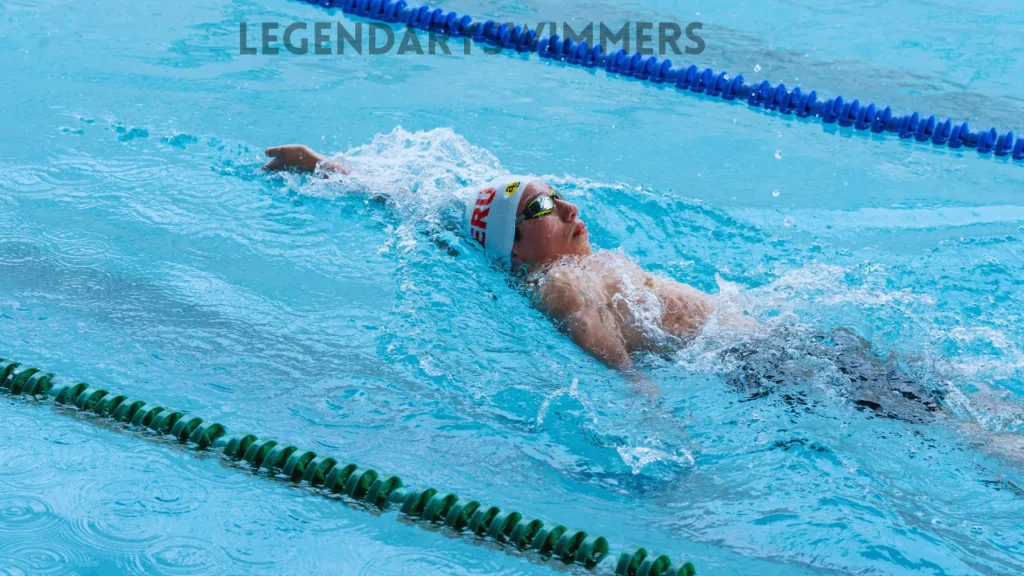
Backstroke Swimming Drills: Training Exercises for Backstroke Swimmers
- Updated:
Are you looking to improve your backstroke technique? Backstroke drills can boost your performance. This tip applies if you’re a swimmer, a coach, or working on your skills. This blog will help you improve your backstroke. Discover drills and exercises to enhance your stroke technique and develop your strength. Together, these tips will make your backstroke faster, more efficient, and effortless.
Understanding the Basics of Backstroke
Before honing your backstroke prowess, you have to master the principles.
Backstroke Technique
The key to an effective backstroke lies in proper stroke technique.
- Hold your body flat on the water’s surface to live stream-lined.
- Your arm movement should be smooth. One arm recovers above water even as the other pulls underwater.
- Keep your head in a gentle position. Look up at the ceiling with a relaxed face. This helps to align your body and avoid neck strain.
For both beginners and seasoned swimmers, attention to body rotation is crucial. Rotating your torso with each stroke helps reduce drag and increase efficiency.
Optimal Breathing Techniques
A herbal respiration pattern is as important as critical in backstroke. Unlike other strokes, your face remains above water, making breathing easier. Enhance your efficiency by timing your inhales and exhales to match your strokes.
Common Mistakes Beginners Make
- Improper Body Positioning: Floating too low in the water increases drag. Aim for a higher, streamlined position.
- Incorrect Arm Recovery: Avoid sweeping too wide or too close. Maintain a rhythmic arm recovery for optimal propulsion.
- Use backstroke flags to check your distance from the wall. This enables you to transition into turns with grace.
Building Endurance and Speed
Unlock your potential by training harder and smarter.
Studies have shown that 12-week SAQ training led to significant improvements in backstroke speed, stroke rate, and coordination compared to standard swimming practice.
Endurance-Focused Drills
- Long Streamline & Flutter Kick Sets: Push off the wall in a long streamline. Then, practice a steady flutter kick to build leg stamina.
- IM Order Practice: Use backstroke in your IM events. It adds variety and builds endurance.
Increasing Stroke Rate
Perform stroke count drills to focus on increasing efficiency while maintaining proper form. Evenly reduce the number of strokes consistent with the lap to end up more streamlined.
Interval Training for Speed
Integrate a structured main set into your practice:
- Swim 10 x 50 yards backstroke with a 30-second rest between sets.
- Alternate between smooth strides and a maximum-speed sprint to simulate race conditions.
Enhancing Stroke Efficiency
Minor changes can lead to enormous upgrades in swimming performance and overall universal performance.
You should adjust your strokes to enhance your performance.
To swim at your best, focus on perfecting each phase of your stroke. Start by improving your pull. Using a high elbow catch during the pull phase ensures you maximize propulsion through the water. This technique enables you to engage larger muscle groups, such as your lats and shoulders, resulting in more power with less effort. Practicing this regularly will help you swim faster while conserving energy during long sets or races.
Using Backstroke Flags for Navigation
Backstroke flags aren’t just for decoration—they’re an essential tool for navigation. Use the flags to avoid collisions and time your turns accurately during practice and races. By counting your strokes from the flags to the wall, you can ensure a perfectly timed turn every time. Building this habit boosts your confidence and precision in races. It helps you stay on track and keep your speed when it counts.
Analyzing Personal Times Against Records
Tracking your progress is key to staying motivated and improving over time. Keep a record of your total yards or meters during each training session, noting your times for specific sets or distances. Then, compare these times against your personal goals, team averages, or competitive benchmarks. Spot where you’re doing well and where you can improve. This helps you set realistic goals and celebrate your progress. This habit not only keeps you motivated but also helps you stay focused on reaching your full potential.
Core Strengthening Workouts
Core strength affects your stability in the water. Try exercises like:
- Glute bridges improve hip alignment and activation.
- Engage in Russian twists to enhance your rotational range of motion.
- Hollow holds to maintain a streamlined position mid-swim.
Lower Body Conditioning Exercises
Leg power matters! Incorporate:
- Dryland flutter kick exercises mimic the propulsion needed in the water.
- Box jumps focus on explosive movements to build stamina and strength.
Upper Body Conditioning Exercises
Strong shoulders and arms ensure optimal strokes. Dryland upper body exercises, such as pull-ups and shoulder presses, target key muscle groups. They help with arm recovery and propulsion.
Weighted vs. Non-Weighted Exercises
Mix weight training with bodyweight exercises. This helps to build functional strength and prevents overdevelopment.
Importance of Body Positioning and Strength
To master the backstroke, you need more than practice. You must also understand body alignment and build physical strength. The way your body moves through the water impacts your speed, control, and energy use. By focusing on proper positioning and muscular balance, you can unlock smoother and more efficient strokes.
Body Alignment Tips
Keeping your lower back close to the water’s surface is essential for reducing resistance. When your hips and legs drop, drag will increase, slowing you down. A high body position helps you stay streamlined and glide faster with less effort.
Core engagement is as vital as other factors in maintaining alignment. Activating your core muscles helps you maintain better posture and body control. It also helps stabilize your midsection, preventing unnecessary movement and maintaining stroke efficiency.
Routines for Stability and Strength
Adding stability exercises to your routine can lead to significant improvements in your control in the water. One great drill is the dead bug exercise with resistance bands. It boosts your coordination and strengthens your core. This improves stability and mimics the control wished for during the backstroke.
These exercises activate smaller stabilizer muscles that swimmers often overlook. Including them in your training boosts good body mechanics. This also leads to smoother movement. The result is better control and endurance in every swim.
Impact of Strength on Swimming Efficiency
Strong muscles provide more powerful strokes and better propulsion through the water. Strength improves your performance, whether you’re pulling or kicking. It helps you swim longer and feel less tired. The stronger your muscles are, the less energy you waste on poor technique.
Additionally, strength supports better posture and faster recovery. When you condition your body, you can maintain proper form even during intense sets. This leads to consistent times, improved speed, and a more competitive performance.
Take your backstroke to the next level.
To improve your backstroke, focus on your technique. Additionally, it focuses on building strength and adopting innovative training methods. These drills will help you swim faster and smarter, giving you an edge in every race.
Check out our dryland training programs. They offer expert drills and personalized plans for backstroke swimmers of all levels. Learn how you can achieve your swimming goals with the utmost efficiency.
FAQs
- How do I improve my backstroke technique?
To improve your backstroke, maintain a streamlined position and focus on strengthening your arm recovery while engaging your core for better body rotation. Consistent practice is key to refining these elements.
- How can I increase my stroke rate in backstroke?
Perform stroke count drills to improve efficiency. Bit by bit, cut down the strokes you take each lap. These techniques will help you swim faster while keeping good form and a smooth position.
- What exercises help build strength for backstroke swimming?
Core strengthening exercises, such as glute bridges and Russian twists, are excellent for improving stability. For stronger legs, add flutter kicks and box jumps to your dryland workout.
- How do backstroke flags improve my swimming performance?
Backstroke flags help you gauge your distance from the wall, enabling you to time your flip turns effectively. Regular use of them prevents collisions and improves transition efficiency during competitive races.
Read Also: Burn Calories Swimming in 30 Minutes: Top Fitness Tips
References

Natasha Nicole Leyva
Hi, I’m Natasha—swimmer, coach, and aquatic fitness enthusiast. My journey began in New Zealand after a professor recommended swimming to help with a knee injury. The low-impact nature of swimming worked wonders, and it quickly became my favorite form of exercise. This passion grew into a thriving swim academy, and soon, requests for aquatic fitness classes started pouring in. After becoming certified, I realized how powerful water workouts could be for recovery and fitness. Now, I share my expertise here to help others experience the benefits of aquatic movement—whether for recovery, fitness, or fun!






